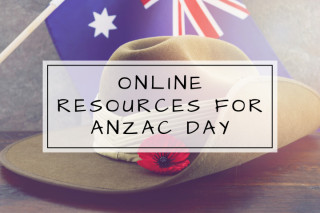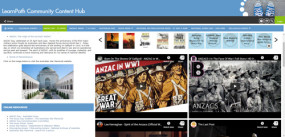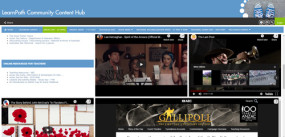- Your School Type
- Solutions
- Resources
- Blog
- Events
- More
- Contact Us
- Book a Demo
- Get a Quote

ANZAC Day, observed on 25 April each year, marks the anniversary of the first major military action fought by Australian and New Zealand forces during World War I. Today the commemoration goes beyond the anniversary of the landing on Gallipoli in 1915. It is the day on which we remember all Australians who have served and died in war and on operational service, past and present. The spirit of ANZAC, with its qualities of courage, mateship, and sacrifice, continues to have meaning and relevance for our sense of national identity.
While this is a time to remember and reflect, it is also a time to educate younger generations by sharing the meaning and history of ANZAC day, and sharing the stories of the brave men and women who served.
To help get you started, we have curated a number of educational resources for school students.
A great place to start is the ANZAC Day Commemoration Committee website where you can find the history of the ANZACs and resources categorised under Early Childhood, Primary, and Secondary School.
On this page you can read about The Spirit of ANZAC which they describe as:
“…comradeship, courage and sacrifice: others before self. It also encompasses the laughter, the pride and the love of life that is in every Australian.”
You can also learn more about Simpson and his donkey, from his early life in Tyneside, his life in Australia, and his involvement and sacrifice in World War I.
For an overview of ANZAC Day traditions and rituals, visit this page on the Australian Parliament of Australia website.
Teaching younger students about ANZAC Day can be a difficult task, and one that many parents would shy away from. With the abundance of information available online and the nature of discussions around war it is important to provide them age-appropriate resources.
RSL Education provides a wealth of resources grouped under year levels to help with this task.
Narrated by children, this animation for Prep – Year 2 discusses ANZAC Day and Remembrance Day, the ceremonies and marches that we observe on these days, and includes some discussion points. For colouring in pages and additional activities visit “What can I do?”
For years 3-6 this slideshow discusses the background of ANZAC Day and Remembrance Day including the Dawn Service and the order of service, the Ode, the ANZAC Day March, Armistice, and Paul Keating’s speech on Remembrance Day honouring the Unknown Soldier. This page also includes questions for reflection after viewing. World War I and Australian Society is an animation that looks at how participation in World War I influenced Australia as a society and the shape of the nation, and this PDF provides a step-by-step WWI research project that asks student to research a person who served in the armed forces.
Another great way to introduce a topic like war to younger students is through picture books. Brisbane Kids has compiled this fantastic list of ANZAC Day books for kids with age-level recommendations. If you have an OverDrive eBooks account, some of these titles can be found in their collection.
To find additional resources for primary students, visit https://rsleducation.com.au/Resources/ and select a year level from the drop down box.
Produced by the ABC, this collection of 12 videos walks students through the landing at Gallipoli. Watched back-to-back, these videos run for 25 mins but are conveniently broken into smaller bite-sized segments, leaving room for discussion or reflection.
The ANZAC Tradition is a video produced by RSL Education for years 7-10. This video covers the history of WWI and living conditions in the trenches, the service of the ANZACs in subsequent war efforts, the meaning behind ANZAC day, and the ANZAC Spirit. It concludes with a reading of Laurence Binyon’s Ode, “They shall not grow old, as we that are left grow old…”.
For older high school students this 12-minute video from the Australian Government of Veterans’ Affairs ANZAC Portal, presents veterans talking about their experiences. And in this post, they can read an account of the Gallipoli landing written by Major Vivien Benjafield of the Australian Army Medical Corps, who served in WWI as a surgeon and administrator.
The Impact of World War I on Australia provides slides and a number of activities for reflection, textual analysis, and research for Years 11 and 12.
If you are looking for books for Secondary students, Reading Australia has curated this list with links to teacher resources, essays, podcasts and more. If you are an OverDrive user, most of these eBooks are available in their collection.
To find additional resources for secondary students visit https://rsleducation.com.au/Resources/ and select a year level from the drop down box.
In light of COVID-19 restrictions, the traditional ceremonies and events held on ANZAC Day will not be open to the public but will be broadcast live across Australia by the ABC. For more information on this year’s services, and to view videos, images, and details from previous years visit the Australian War Memorial site.
If you are a LearnPath user, you can access our ANZAC Day guide via the LearnPath Community Content hub by going to Calendar events. This guide has been curated by an experienced teacher-librarian and is free for you to download, add to your system, or customise, and can be accessed by students whether they are studying at school or from home.


If you would like further information on how to do this, please submit an enquiry through the customer portal or email support@softlinkint.com.
Editors note: This post was originally published April 2020 and has been updated in April 2023 for freshness, accuracy, and comprehension.